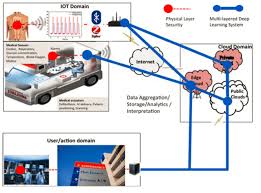Exploring Ericsson’s Role in the Internet of Things (IoT) Revolution
The Internet of Things (IoT) has revolutionized industries across the globe, connecting devices, systems, and people like never before. With the growth of IoT, the need for advanced networks and seamless communication has never been more crucial. Ericsson, a leading global telecommunications company, has played a significant role in this transformation. Known for its innovations in mobile networks, Ericsson’s contributions to the IoT ecosystem have made it a key player in the digital revolution.
Ericsson: A Pioneering Force in Telecommunications
Ericsson was founded in 1876, and since then, it has established itself as a leader in the telecom industry. Over the years, the company has been at the forefront of technological advancements, consistently pushing the boundaries of mobile connectivity and wireless networks. Today, Ericsson stands as one of the primary providers of 5G technology, and its influence on the IoT ecosystem has been immense.
The Growth of the Internet of Things
The IoT refers to the vast network of interconnected devices that communicate with each other through the internet. This ecosystem includes everything from smart home devices and wearables to industrial machines and connected cars. As the IoT continues to expand, it requires robust networks capable of handling enormous volumes of data and enabling real-time communication between devices.
As more devices become connected to the internet, the need for high-performance, low-latency networks has become more apparent. This is where Ericsson’s expertise in mobile network infrastructure plays a vital role. With the advent of 5G technology, Ericsson is helping to create the backbone for the IoT revolution, enabling faster, more efficient, and reliable communication between devices.
Ericsson’s Role in the IoT Landscape
Ericsson has been actively involved in the development and deployment of IoT networks. The company has made significant strides in providing the infrastructure required to support the increasing number of connected devices. Their focus on 5G technology is central to their strategy, as 5G offers the low latency, high throughput, and high reliability needed to handle the data traffic of IoT devices.
- 5G Networks and IoT Connectivity
5G is a game-changer for IoT. Compared to previous generations of mobile technology, 5G provides faster speeds, lower latency, and the ability to connect a higher density of devices simultaneously. Ericsson is leading the way in deploying 5G networks, with a focus on ensuring that these networks can support the vast number of IoT devices that are expected to emerge in the coming years. With 5G, devices can communicate almost instantaneously, which is crucial for applications like autonomous vehicles, smart cities, and industrial automation. Ericsson’s 5G solutions are designed to optimize IoT performance by enhancing the network’s capacity and speed, which allows for real-time data exchange. - IoT Platforms and Solutions
Ericsson offers various IoT platforms and solutions designed to streamline the deployment and management of IoT systems. Their IoT platform is a comprehensive solution that enables enterprises to deploy and manage IoT devices with ease. The platform facilitates the connection of devices, the collection of data, and the analysis of this data to make informed business decisions. By offering end-to-end solutions, Ericsson ensures that companies have the tools they need to implement IoT applications across different industries, from healthcare and transportation to energy and manufacturing. Their ability to provide scalable and secure IoT solutions is one of the reasons why many businesses turn to Ericsson for their connectivity needs. - Industry Collaborations
Collaboration is key to the IoT ecosystem, and Ericsson understands the importance of partnerships. The company has formed strategic alliances with various industries, including automotive, healthcare, and manufacturing. These collaborations enable Ericsson to create customized IoT solutions that cater to the unique needs of different sectors. For instance, Ericsson has partnered with automotive companies to develop connected car solutions that improve driver safety and efficiency. In the healthcare sector, the company is working on IoT-enabled medical devices that allow for remote patient monitoring and real-time data collection. Such collaborations not only expand Ericsson’s IoT reach but also ensure that the technology is tailored to the needs of various industries.
The Future of IoT and Ericsson’s Impact
As the IoT landscape continues to evolve, Ericsson’s role will only become more prominent. The company’s investment in 5G technology and its IoT platforms position it to remain at the forefront of this revolution. Looking ahead, Ericsson is working on enhancing the performance of IoT networks, focusing on key areas such as network security, edge computing, and artificial intelligence (AI) to further drive the growth of IoT applications.
In conclusion, Ericsson’s contributions to the IoT revolution are substantial and multifaceted. From pioneering 5G networks to providing robust IoT platforms and fostering industry collaborations, Ericsson is helping to shape the future of connected devices. As IoT continues to transform industries worldwide, Ericsson’s innovations will remain essential in ensuring the seamless communication and integration of devices across the globe.







